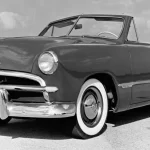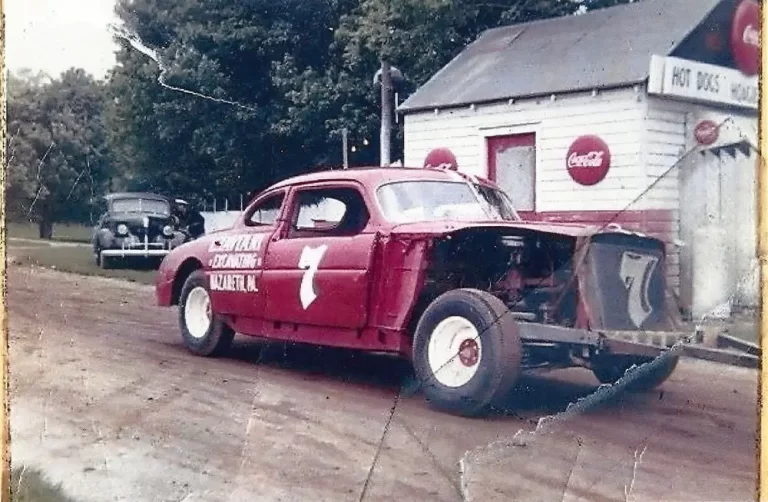
Littered on the Internet are reports of a Reverend Georges-Antoine Belcourt displaying a Ware Steam Carriage, the first car on Prince Edward Island in Canada, on July 5, 1866. These mere, sourceless sentences left much to the imagination. Thankfully, one man, Rudy Croken, a one time president of the Prince Edward Island Automobile Clubs of Canada organization, decided to figure out exactly what these so called reports referred to. His lengthy research found the date provided to be inaccurate. What actually occurred on a July 5 in 1869, not 1866, was that a newspaper reported that a steam car had been recently displayed on PEI. Please read Croken’s entire article from a 2017 Cruisin’ Canada newsletter article below. Visit the link for sources on his research.
“Prince Edward Island has a long and an important place in the history of the automobile in Canada. No history of the automobile in Prince Edward Island or Canada would be complete without an examination of the life of Geor-ges-Antoine Belcourt (April 22, 1803-May 31, 1874). His contributions as a missionary are spectacular in the areas of present day Manitoba, North Dakota and Prince Edward Island but his place in Canadian automobile history is also significant as he was the first Canadian to own an automobile. At a time when the National Association of Automobile Clubs of Canada are putting such emphasis on automobile heritage it is only fitting to celebrate the man and the place where it all started 150 years ago. There are many inaccurate reports in print and on the web which seem to be the result of poor or no research. The following information is based on newspaper articles of the day, signed affidavits and some generally accepted local lore in the Rustico community and I will identify it as such.
The story of Georges Antoine Belcourt starts in Baie-du Febvre, Quebec, where he was born on April 22, 1803, the oldest of 11 children. He went on to become a Jesuit priest and missionary. In 1859 he was assigned to the parish of Rustico, Prince Edward Island, arriving on November 1, 1859. 1 Except for a short time in the fall of 1865, Belcourt served the Island parish for a decade from 1859 to 1869. Although not documented some people believe the time he was away in 1865 is when he made arrangements to buy the steam vehicle. Thinking a horseless carriage would benefit his people he purchased the automobile in Philadelphia, Pennsylvania, USA …. He became the first Canadian to
import a car into Canada. There are several versions as to the origin of the Belcourt’s steam car but there is evidence to show it was the machine designed by Elijah Ware of Bayonne, N. J. which was described in a New York science journal dated 19, January, 1867.
Rudy’s article is a repeat of an article in the Feb 2016 Cruisin’ Canada. However; now that we have a
photo of the vehicle, a number of new NAACC Clubs since Feb 2016 and the recognition of this vehicle in Dec; I thought it appropriate to include the article again for the benefit of those many members who are unfamiliar with this milestone. According to the 1867 account the Ware machine was designed ‘for running on common roads, or on ice’ and could be adapted ‘to driving thrashing or other machinery, pumping from wells, watering gardens and many other purposes.’ 3 A later account of Ware’s machine, published in Chicago in 1913, says that Ware sold his machine to “a clergyman down on Prince Edward Island for $300 and it was used for some years…”

Another piece of evidence as to the existence of the vehicle and that Father Belcourt was seen driving it was produced in 1940 when Jerry Peters of Howland made an affidavit to the effect that he observed Father Belcourt driving his car. It reads as follows: I, Jeremiah Peters, of Howlan, in Prince County make an oath and say: That I was born in Queens County, Prince Edward Island on the 18th day of April 1855 as I was advised and verily believe. That I quite distinctly remember seeing the steam carriage operated by Father Belcourt. This would be about the year 1866. The carriage appeared to be an ordinary driving carriage propelled or powered with a small steam engine as a source of motive power. Sworn to before me at O’Leary in Prince County, Prince Edward Island, this 31st day of Aug. Jerry Pe-
ters signature) 1940 Arthur J Matheson (signature) J.P. for Prince County.”
Further evidence as to the existence of Belcourt’s automobile is supported by the following report in the December 19, 1866 edition of the Charlottetown Herald, which Durnford and Baechiler say “took only casual note of this historic event.” It described the historical event as follows: A CURIOSITY.–“A single seated steam waggon passed through the city this week on its way to the owner, the Reverend Mr. Belcourt, Rustico. When we saw it, the waggon was drawn by horses, but it is furnished with a steam engine, & c, and can be propelled by steam. It is the first vehicle of the kind introduced into this island.”-Pat. 7 When the vehicle arrived by sailing ship in Charlottetown “two teams of horses, took turns hauling it from Charlottetown to Rustico because no one knew how to operate it. 8 Local community lore gives Moses Gallant of Oyster Bed Bridge credit for hauling the steam vehicle to Rustico; “the late Moses Gallant of Oyster Bed Bridge, with a team of horses took the wagon to Rustico.”
According to community lore Belcourt became the first Canadian motorist when he reportedly drove
the car in the Sainte Jean de Baptiste Day celebrations on June 24, 1867. No newspaper reports documenting this event have been found but there are several versions of Belcourt’s first trial run of the vehicle. One account of the trial trip states “The trial trip, awaited with mingled interest and anxiety, was made on the occasion of a tea party held on the church grounds on June 24, 1867, patronized by more than nine hundred persons….The pastor mounted the seat, the levers were adjusted, the valves opened, and the horseless carriage was on its way. … all went well for a time and hopes of success ran high, but alas! The steam propelled carriage got out of control, left the road, plunged into a fence and halted… .” There is no documented date for the accident but the report of the accident is so imbedded in the lore of the community and in several publications, although without references, I do not doubt that he did have an ac- cident, but when it happened is the question; probably as community lore suggests, on its trial run in 1867.
There are also two undocumented reports on the final resting place for Belcourt’s car. One suggests that it was sold to a friend, Charles Gregor of New Glasgow, who found use for the engine in his carriage shop. Others say it was substituted for the windmill in threshing and sawing. 11 Another accounts suggests the car was reportedly dismantled and the power plant was taken to Pictou, Nova Scotia, to be used in a tug but was too small and ended up in a threshing machine and later scrapped.
While there may be some elements of truth in both reports neither is totally accurate as there is evidence the vehicle was used beyond its initial trial and therefore was not wrecked, junked or sold in 1867. While there is little to be found on the car over the next year or so, there is proof of its further use. On Monday June 21, 1869, a notice in The Examiner advertised a Tea Party put on by the Catholic Institute on the church grounds on June 24th, to realize money in aid of the Catholic Institute Hall.
As part of the notice it stated “… The new Steam Carriage will be run through the settlement during the
day for the amusement of the visitors.”
As a follow-up to this notice in the July 5, 1869 edition of the Charlottetown Examiner an article reports
“The Annual Social Gathering of the members of the Catholic Institute of Rustico took place on the 24th of June, as announced.” It further states that, “From 800 to 900 persons partook”, and … “In the afternoon, a steam carriage was put in motion and with great wonder and delight was observed steaming away for half a mile on the road and back again, at a fast rate of speed, after which the meeting dispersed in good order, all appearing well
pleased with the day’s proceedings …”
Further evidence of its use in 1869 can be found in an article in the New Brunswick French language
newspaper the Moniteur Acadian of July 9, 1869 where a correspondent describes attending the Sainte Jean deBaptiste celebrations in Rustico. Translated into English it states the feast was celebrated with great magnifi-cence… and after the blessing the crowd proceeded to tables that were caving in from the weight of exquisitely prepared dishes …. Further it states, but what added a lot to the amusement of the gathering was a steam engine (vehicle) that our good parish priest had started and did a promenade around the site. The article stated that forthe Editor who sees everyday the engines of railroad trains it would not seem strange but for those that saw it today, it was a welcomed novelty.
While the date that Father Belcourt parted with the vehicle is not documented; research from 1869 does show that “during the summer his health began to decline perceptibly, and he decided to retire… and … “Shortly after mid-September Father Belcourt left Rustico.”

















